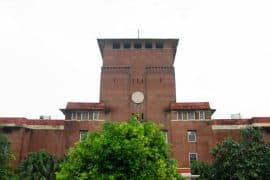In the two main areas of conflict reporting in India: Kashmir and the North-East, plagued by insurgencies,
and the states affected by political extremism, many journalists have been targeted, maimed, or even assassinated or killed as a result of their ‘living’—journalism
Attacks on journalists are nothing new, whether they take place within or outside of crisis zones. A Thakur Family Foundation investigation found that between 2014 and 2019, there were at least 198 serious
attacks against reporters in India, of which 36 occurred in 2019. According to a survey released last year, 40
occurrences of journalist deaths occurred, 21 of which were related to their profession. But given the circumstances on the ground, the obstacles are far greater in Kashmir.
As recently as 2018, unidentified gunmen in Srinagar shot and killed Rising Kashmir’s Shujaat Bukhari. Photographer Kamran Yousuf stated last year that he was wounded close to an encounter site in the Pulwama district. Senior Kashmiri journalist Yusuf Jameel claims that after 1989, completely new difficulties arose for journalists in carrying out their work. He said, “Every day is becoming difficult for us, so many things are happening. Largescale killings have started taking place, and the whole thing [has] changed. Information accessibility has become zero, entry to many places is banned. Attempts to suppress information have started.
Jameel also recounts how in 1995, while working for the British Broadcasting Corporation (BBC) in Srinagar, he and two other men were attacked. He said,
“I didn’t fear for life as such but I have faced a number of allegations of glorifying militants, [and of] being their hand. I was called an Indian agent by the militant groups. I faced six attacks. In one of the attacks, which was a parcel bomb last in Srinagar office in 1995, I, along with another fellow journalist, was injured while the third succumbed.”
It has long been believed that the worst Indian state excesses are first attempted, tested, and polished in
Kashmir before being implemented elsewhere in the nation. The same holds true for political arrests. Following the Modi government’s decision to abrogate Article 370, more than 5,000 Kashmiris were detained. Politicians, attorneys, businesspeople, activists, and journalists were jailed in remote locations or confined under house
arrest throughout the valley.
In November 2021, noted human rights activist, Khurram Parvez, from Jammu Kashmir Coalition of Civil Society (JKCCS), a group based in Srinagar which publishes regular reports on the human rights violations
and excesses committed by security forces in the Valley, was arrested on accusations of “terror funding”. The
National Investigation Agency (NIA) took charge and he was arrested under the draconian anti-terrorism
law, making it impossible for him to get bail. Earlier this year, Kashmiri journalist Fahad Shah was detained
under the Jammu and Kashmir Public Safety Act (PSA) on the grounds that he had been “misguiding common masses by circulating fake news against the government and its policies.”
In the North-East, we observe a similar situation. The list of deceased journalists is extensive and includes
everyone from editors to lower-level reporters and camera operators. According to government data, there have been 32 deaths in Assam since 1987. Despite a clear connection to individuals in authority, none of these cases has seen a thorough investigation that resulted in the conviction of the accused.
Konsam Rishikanta, a sub-editor for the Imphal Free Press, was killed by unidentified assailants in 2008 in a
neighborhood of Imphal. Yambem Megha, a reporter for Vision North East, was shot and killed in 2002.
The Manipur News’ editor, a thenpopular English publication, was also killed in 2000. And many more unidentified cases could be added to this horrifyingly exhaustive list. Even after dangling between numerous situations of life and death, journalists in these states remain largely underpaid—from late commissions from the government to newspapers never paying the recommended wage. With media houses shutting down and their offices being sealed, there is only so much one can criticise about them.
While India drops to 150th place out of 180 nations on the World Press Freedom Index, even behind Palestine and Afghanistan, it wears the crown of “one of the most dangerous countries for media,” and according to research, a place “where journalists are vulnerable to all types of violence.” On a daily basis, those who defend free speech are either incarcerated or shot to death with metal. Furthermore, the administration remains mostly intent on denying the reality of the crisis it has created by fabricating the report’s “questionable methodology” in parliament.
Aayat Farooqui



Comments are closed.